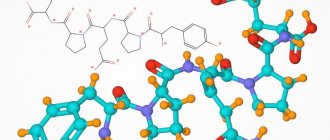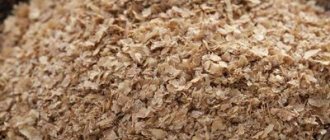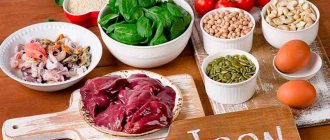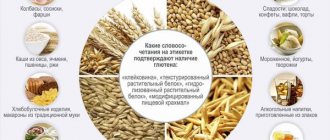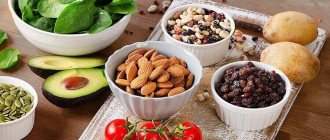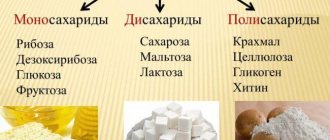Our modernity is not only rapid technological progress, but also an era of extensive development of diseases that few people have heard of before. For example, the number of people with allergic reactions to quite ordinary foods or cosmetics is growing day by day.
- Gluten: what is it?
- Why is gluten harmful?
- What foods can gluten be found in (table)
- List of gluten-free foods and gluten-free diet
- Gluten and a healthy lifestyle
Doctors are sounding the alarm, and more and more often you can find mention of such a diagnosis as gluten intolerance. So what is gluten? Let's try to figure out what this substance is and why it is considered harmful.
Gluten - what is it?
This is a plant protein that is found in various varieties of oats, rye, wheat and barley. The group of proteins consists of gliadin and glutenin. Another name is gluten.
Gluten's rich chemical composition includes at least 20 essential amino acids that the human body cannot produce on its own. Most often, the components are well digested by the body, but cases of allergies and intolerances have been increasingly detected lately.
Interesting! 7 important beneficial properties of fish oil capsules for human health
Why is gluten harmful to your health?
It is believed that gluten can be allergenic and harmful to health:
- Digestion. Once in the small intestine, gluten has a negative effect on the digestive system. Complex protein is difficult to digest, causes general irritation of the gastrointestinal tract and impairs the absorption of beneficial components from food. The functioning of the villi of the small intestine is disrupted.
- Immunity. It is difficult for our immune system to recognize this type of protein and it begins to activate antibodies to destroy it. Moreover, the protein is similar in structure to the structural units of the thyroid gland and tissues of the cardiovascular system. Thus, the body gets confused and destroys organ cells similar to it along with gluten. Due to such a systemic error, many diseases develop: diabetes, multiple sclerosis, Hashimoto's goiter. The attack causes damage to gastrointestinal cells, flatulence, allergies, constipation and diarrhea.
After 40 years, the body is rebuilt and gluten becomes even more dangerous to health. After changes in the functioning of organs, products containing gluten cease to be absorbed normally. Gluten simply settles on the walls of the intestines, clogging it and preventing the full absorption of nutrients.
A disease in which the body cannot digest gluten is called celiac disease. The disease belongs to the class of autoimmune. Approximately 1% of people in the world suffer from this disease. The exact reason for this behavior of the body has not yet been clarified, but doctors talk about a genetic predisposition. Laboratories are developing cures for the disease, but so far the gluten-free diet has shown the greatest effectiveness.
There are different degrees of sensitivity to protein. You don't have to have celiac disease to be sensitive to gluten. A negative reaction can be reflected in headaches, constant fatigue, bloating, eczema and depression. Gluten can also cause hormonal imbalance, cycle disruption in women, and problems with skin, nails and teeth.
Interesting! List of foods containing healthy carbohydrates
Complications of this disease
Headache as a symptom of celiac disease.
For the type of people who cannot digest gluten, a minimal dose of gluten can cause constipation or diarrhea.
Celiac disease itself can cause a whole list of complications, such as:
- Secondary osteoporosis;
- Chronic ulcerative enteritis;
- Tooth enamel is damaged;
- Headache;
- Joint pain;
- Liver disorders;
- Skin rash;
- Nausea;
- Dysfunction of the spleen;
- Fibromyalgia;
- Lymphoma;
- Inability to have children;
- Fast fatiguability;
- Convulsions;
- Lack of vitamins in the body;
- Rheumatoid arthritis;
- Pathology of the pancreas, gall bladder.
Having reviewed such a list of complications that celiac disease causes, it is not surprising that there are so many requests for information about which foods do not contain gluten.
Gluten allergy
An allergic reaction to gluten is quite rare and is caused by the following reasons:
- reduced immunity;
- disorders of the gastrointestinal tract;
- negative external factors - poor lifestyle, infections, viruses and environmental conditions.
The disease can be detected through tests. It is worth paying attention to an increase in alkaline phosphatase levels, a decrease in cholesterol, and an increase in albumin.
These indicators reflect problems with the liver, kidneys, bone and muscle tissue disorders. The patient's body is at risk of developing stomatitis and arthritis - this is evidenced by inflammation of the internal organs. Protein intolerance negatively affects the brain and its blood supply, causing migraines and neuralgia.
Celiac disease in children
According to statistics, 75% of children are diagnosed with celiac disease, and such children are obese or overweight.
This pathology is caused by digestive dysfunction. Symptoms of this disease vary depending on age. Infants develop intestinal flatulence, chronic diarrhea, severe abdominal pain, and rapid weight loss.
How does gluten intolerance manifest?
Celiac disease usually occurs in childhood. Most often this manifests itself during the introduction of porridge into complementary foods at the age of about 6-7 months. Sometimes gluten intolerance can manifest itself later under the influence of various factors, for example, ARVI or intestinal infection.
Typical symptoms of gluten intolerance include:
- mushy grayish stool;
- sudden weight loss;
- bloating and increase in abdominal circumference;
- difficulties with the development of psychomotor skills.
The symptoms of celiac disease are similar to those of other diseases, so it can be difficult to diagnose. Frequent consequences of developing gluten intolerance:
- Deterioration of absorption of vitamins and microelements. At the same time, vitamin D and calcium are absorbed worst of all. This leads to the development of osteoporosis and rickets.
- Deterioration of lipid and carbohydrate metabolism. Causes energy metabolism disorders, polyhypovitaminosis.
- Lactase deficiency as a possible consequence. Accompanied by bloating, copious sour stools of foamy consistency.
Who benefits from gluten?
If obvious intolerance is not detected, completely eliminating gluten from your diet can even harm your health. Benefits of gluten:
- Lysine helps the body with tissue regeneration, ensuring its protective functions, and resists viruses and infections.
- Threonine is needed to normalize the functioning of the gastrointestinal tract.
- Methionine is a participant in the processes of regulating metabolism.
These are essential amino acids that the body cannot synthesize on its own and is replenished from food. Gluten is one of the slow carbohydrates. By succumbing to general panic and stocking up on gluten-free products, a healthy person is digging a hole for himself. Starches that have successfully replaced gluten can spike blood sugar levels. At the same time, the diet begins to look at least strange - gluten-free, but stuffed with fast carbohydrates.
Gluten contains dietary fiber, B-group vitamins and microelements of zinc, copper, magnesium and iron that are important for the body. Gluten-free products contain 2 times less protein, dietary fiber, and sodium.
Reviews from nutritionists
— There is still debate about the dangers of gluten, but it can cause really noticeable harm only to people suffering from gluten intolerance, of which there are very few. The diet is useful for those who cannot give up flour and are accustomed to a large amount of baked goods and sweets - often these are the ones that cause them to gain excess weight. A gluten-free diet will help you learn to replace unhealthy snacks with healthy eating. Since the diet is quite balanced and does not limit calorie content, losing weight goes quite unnoticed, but will not cause harm and will give a stable result if, after switching to a regular diet, you do not start “eating” everything with baked goods, says Dilara Akhmetova, consultant nutritionist, nutrition coach .
What foods contain gluten?
If you have a reaction to gluten or just want to change your diet, all gluten-containing products need to be replaced. The following products contain gluten:
- cereals, breakfast cereals, custard porridges, crackers, bread;
- cereals and cereals: wheat, barley, semolina, couscous;
- bran;
- almost all types of flour, including wheat and rye;
- pasta, canned food, semi-finished products, including frozen;
- seasonings, salad dressings and store-bought sauces.
The list of products shows that gluten is most often found in familiar porridges: semolina, pearl barley, bulgur, spelled, and sometimes oatmeal.
Gluten can also be an ingredient in some cosmetics and medications. You can often find it in powder and even lipstick, although there is only a small amount of it. If there is even the slightest risk of allergies, you need to carefully read the composition of the products you purchase. Gluten corresponds to a number of additives: E160d, E150d, E953, E636, E965.
There are a huge number of cases when the package says “gluten-free”, but in fact it is not. Manufacturers have no qualms about deceiving customers. To find the product you're looking for, look for a picture with a crossed out spikelet - this is an international sign that a product is safe for people with celiac disease (gluten intolerance). The law obliges the manufacturer to indicate the gluten content of the product, most often this is the inscription: “May contain traces of gluten.”
Of course, not all foods containing gluten are harmful, especially if there is no confirmed celiac disease. Rye and barley as whole grains provide the body with essential fiber, microelements and vitamins. Oatmeal, although not officially listed as gluten-containing, may contain protein because it is grown near crops that do.
There are products that contain hidden gluten. Such products include:
- ice cream, candy, other sweets;
- medicines;
- semi-finished products containing cereals;
- fast food - chips, french fries;
- alcohol – vodka, cognac and beer;
- canned vegetables (starch may be added);
- stabilized dairy products;
- Cereal-based vinegars;
- instant cocoa, coffee.
Casein is the same complex protein, but of dairy origin, found in products such as cottage cheese, cheese, butter, and dairy-based baked goods (gluten + casein).
Gluten can also be found in dairy products such as yoghurts, creams, sour cream and cheese.
Knowledge base
In order to properly build a diet and exclude products containing gluten from it, it is worth understanding the characteristics of this element, its dangers and benefits for the human body. Gluten is a collective term that combines a group of proteins. The latter are contained in the seeds of cereal crops and are present in the diet of every person. In the dry state, the substance is a powder, and after contact with water it turns into viscous gluten. The greatest problems when consuming products with such protein are experienced by people with individual intolerance.
Due to its “adhesive” properties, gluten is actively used in the food industry. It is used in the baking of bread, in the production of meat products and various semi-finished products. Thanks to the addition of such protein, products are stored longer, retain their shape and guarantee “airiness” when baking.
A small amount of the substance is not hazardous to health. If you regularly include foods containing gluten in your diet, then the appearance of side effects is not far off. The following problems are possible here:
- gastrointestinal disorder;
- diarrhea;
- stomach pain;
- deterioration in the absorption of vitamins;
- decreased immunity and so on.
Not everyone knows, but the quality of flour depends on the amount of gluten in the composition. Here the pattern is as follows:
- Premium flour contains 30% gluten or more.
- First grade - up to 28%.
- Second grade - 23-25%.
- Pulp flour - 18-20%.
It is easy to determine the gluten content - just knead a little dough and soak it in water until the starch is eliminated. The procedure is carried out until a small piece of sticky substance remains in the hands. The quality of extracted gluten is characterized by the following criteria:
- color;
- level of elasticity and resilience;
- extensibility.
A substance with a light yellow hue is considered high quality. If the finished composition is dark in color, this indicates low quality flour. In addition, good gluten should not stretch more than 15-20 cm.
List of gluten-free products
In order not to cause damage to the gastrointestinal tract and feel good, you need to choose gluten-free products. Nowadays you can find a lot of gluten-free products in stores:
- pea flour, flaxseed flour, legume flour;
- millet, amaranth, buckwheat, buckwheat;
- potatoes (except French fries);
- corn and derivatives;
- dried fruits – dried apricots, figs, dates, prunes;
- sugar and natural honey;
- milk and cheeses (not all);
- Fish and seafood;
- red meat, turkey, lamb, chicken;
- walnuts, peanuts, pine nuts, almonds;
- chicken eggs;
- fruits and berries.
The list of products allows you to create an interesting menu for your diet. It is worth remembering that a gluten-free diet creates the risk of not getting enough fiber, so you need to add vegetables and whole grains to your diet. Possible iron deficiency, lack of folic acid, calcium and vitamins.
Healthy lifestyle and gluten
The diet allows you to lose weight, but only if a number of conditions are met. Its main advantage is that it replaces the usual gluten products with fresh and baked vegetables and fruits.
With such a diet, there is a high probability of increasing the calorie content of the menu due to starch and instant cereals. In this regard, it would be useful to learn how to count calories. Gluten-free foods are low in fiber and vitamins, which means they must be obtained from other sources. When giving up lactose and gluten at the same time, the menu should be drawn up with an even more serious approach.
If you want to stop eating gluten, you need to:
- Make a list of foods you can and cannot eat. To do this, you should find out the degree of gluten intolerance. If you are highly sensitive, you should purchase separate utensils for cooking and go through the shelves with products to replace gluten-containing ones with analogues.
- Learn to carefully study the composition of products on store shelves. Gluten increases the viscosity of the product and can easily be contained in the most unexpected things: sauces, sausage, cheese, yogurt, minced meat, etc.
- Inform your family and friends about your dietary changes to avoid accidentally consuming gluten at social gatherings.
- Monitor gluten groups and websites for frequently updated information about products you can find in stores.
- Use reputable online stores to be able to purchase gluten-free products.
Following a gluten-free diet is not as difficult as it seems. Over time, you can get used to any diet. There are many sources of information on the Internet with recipes for familiar baked goods, cookies and gluten-free bread. How to replace familiar dishes - see the table:
| Contains gluten | What to replace |
| Wheat bread | Bean flatbreads, buckwheat and rice pancakes, flourless pita bread, bread |
| Oat cookies | Replace wheat flour with coconut flour, sweeten with Jerusalem artichoke |
| Sandwiches and hamburgers | Instead of bread - lettuce or baked potatoes, the filling can be any |
| Wheat paste and noodles | Corn pasta, buckwheat or rice flour noodles |
| Breakfast cereals and cereals | Buckwheat flakes, granola based on green buckwheat, nuts and seeds |
| Potato chips | Rice chips, fruit, nuts |
results
It is possible to lose up to 5 kilograms per week with this diet, additionally excluding sweets and fatty foods. But usually the results are more modest.
The main advantage of the diet is the improvement of general condition, well-being, restoration of intestinal function, and a healthy complexion.
This is interesting
Diets: which ones are the safest and most effective?
